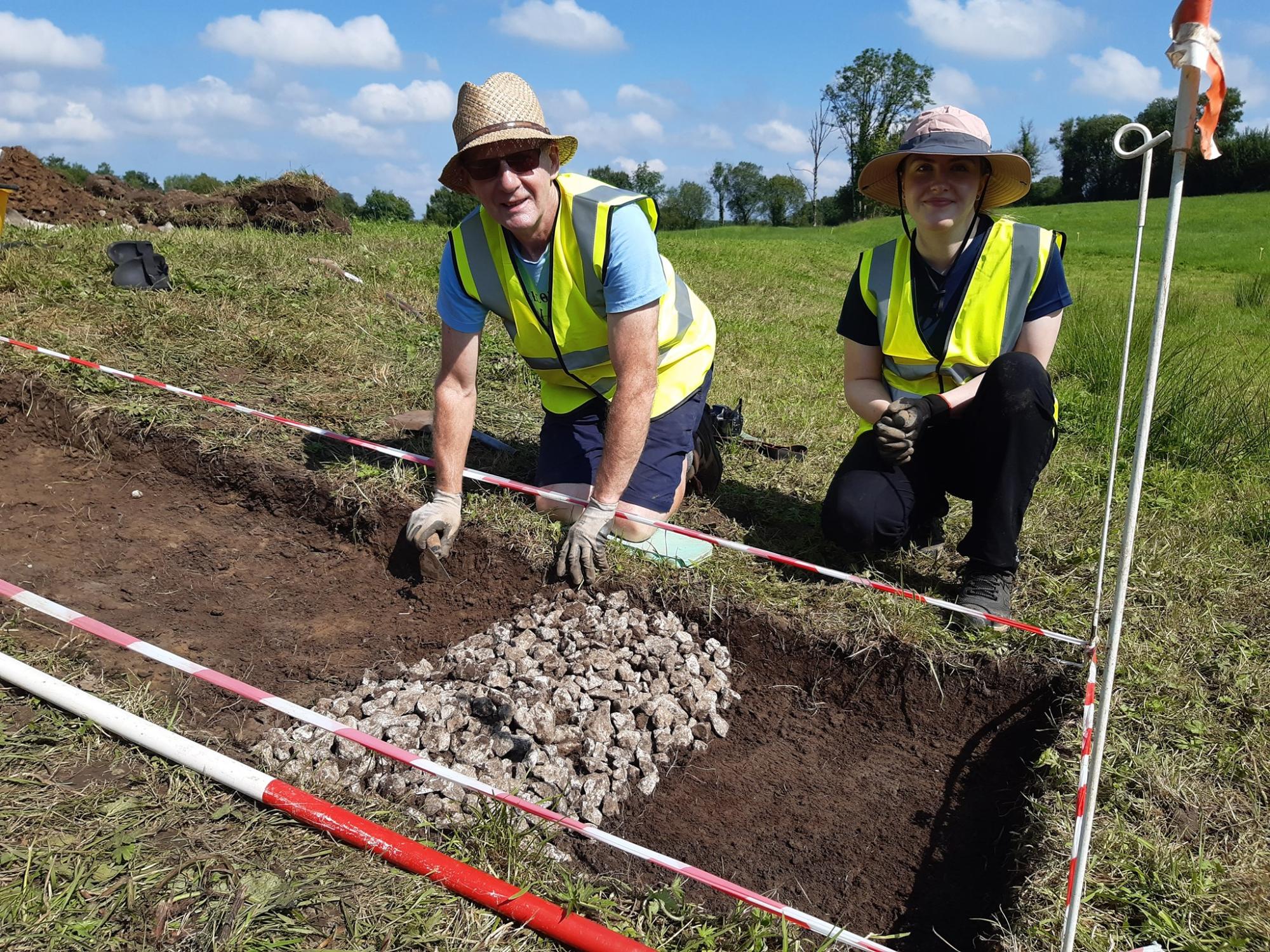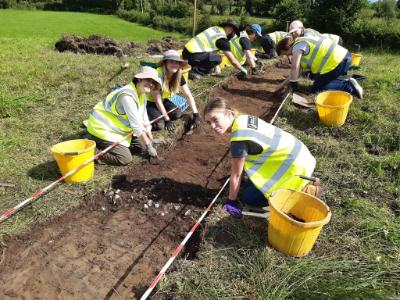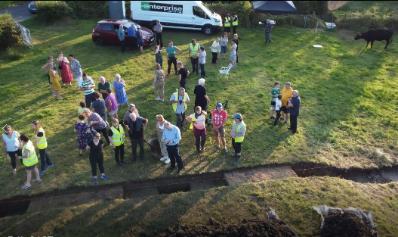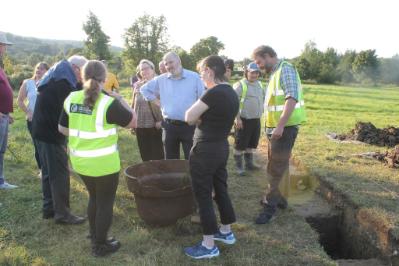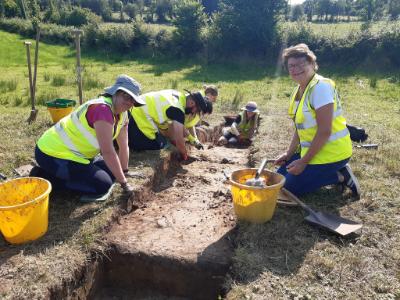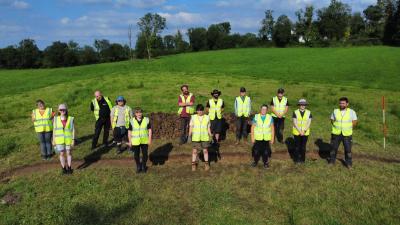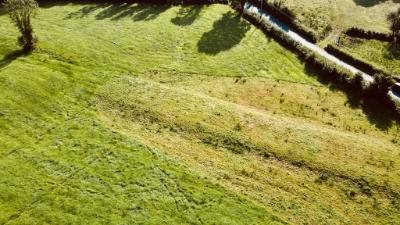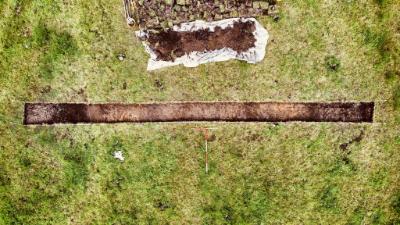Boho Famine Road
The CCA undertook a unique excavation in Boho Co Fermanagh in 2021. The investigation was funded by the QUB Engaged Research Fund and focussed on the remains of a ‘Famine Road’ dating to the mid-nineteenth century. “Famine Roads” are a striking element of the historic landscape across Ireland, but they have largely escaped archaeological attention, despite the fact that these structures constitute monuments that are directly associated with the Great Famine. Also known as “Meal Roads”, “Broad Roads”, “Brachán (Porridge) Roads”, “Cuttings”, “Lines” and “New Lines”, within Fermanagh they were constructed in the period from October 1846 to June 1847 when the British government’s response to the crisis in Ireland was to initiate public work schemes, frequently involving the construction of new roads where the poor might obtain payment or food in return for work. Undertaken during a terrible winter, the schemes caused more harm than good among a population already racked by the effects of the catastrophe, and by Spring 1847 (a year known in history as “Black ’47”) the programme was abandoned as a failure by the Whig government in London, with a network of soup kitchens to be funded by local taxation instead. The roads that had been started, however, were not always completed and many of them were abandoned unfinished.
A single trench across the monument was excavated by members of the local community working with the CCA archaeologists. This trench gave important information into the construction of the road during the 1840s.
